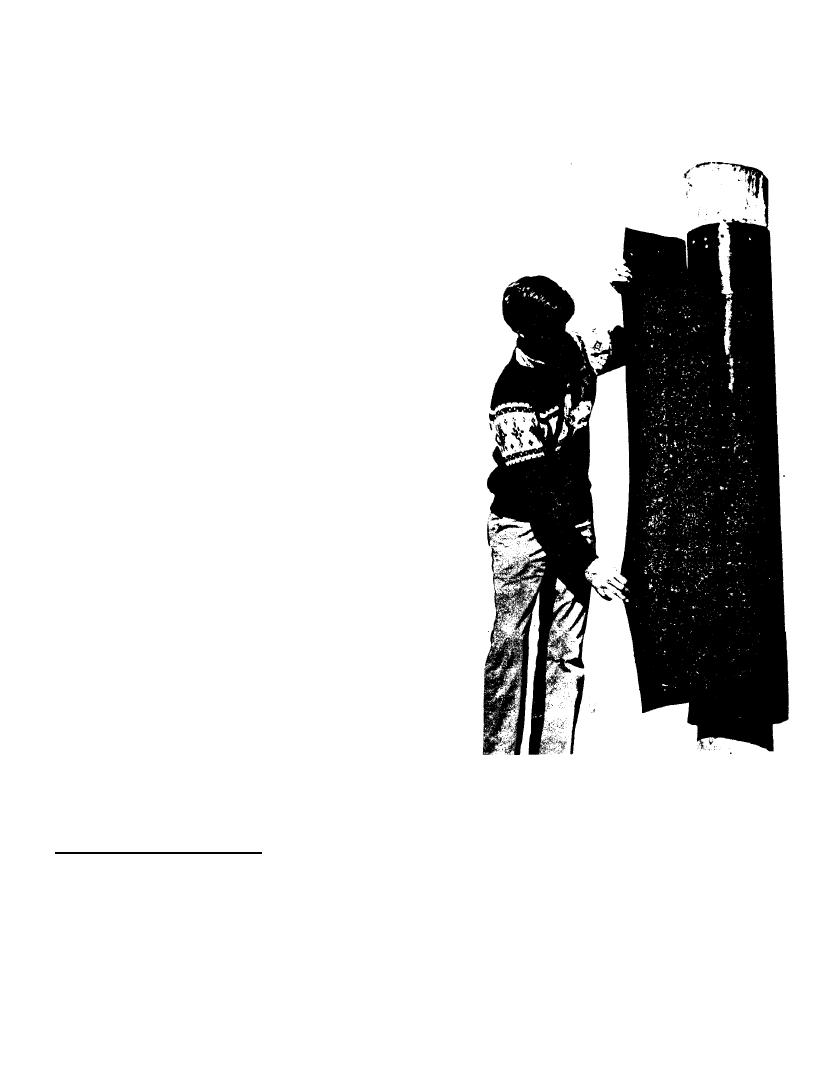
It is
instaliation--(see Ngure 2).
molded to conform to the cylindrical
s h a p e of a piling and is nailed in
place using simple hand tools. The
jacket has internally molded raised
nodules graduated to create a reverse
piling taper.
This allows the ice
sheet to move along the jacket as the
water level changes, preventing the
pile from being lifted from the bottom.
The black jacket resists ice adhesion
and absorbs heat from the sun, which
helps melt the surrounding ice.
There are certain conditions under
which the jacket may not be totally
e f f e c t i v e . These conditions include
installation on piling not driven to
the depth necessary to obtain minimum
uplift resistance and installation on
floating dock systems where there will
be chafing forces on the jacket. Nor
is it recommended where there is a
combined tide, seiche, and ice thickness
exceeding 5 ft. The bottom of the jacket
must extend below the lowest low water
level to prevent ice from crushing the
bottom of the jacket and lifting the piling.
Figure 2.
The Ice Jacket
For further technical information, contact Leonard
ADDITIONAL INFORMATION:
Zabilansky of CRREL at (603) 646-4319 (FTS 836-4319) who has been involved in
the testing of the jacket.


 Previous Page
Previous Page
